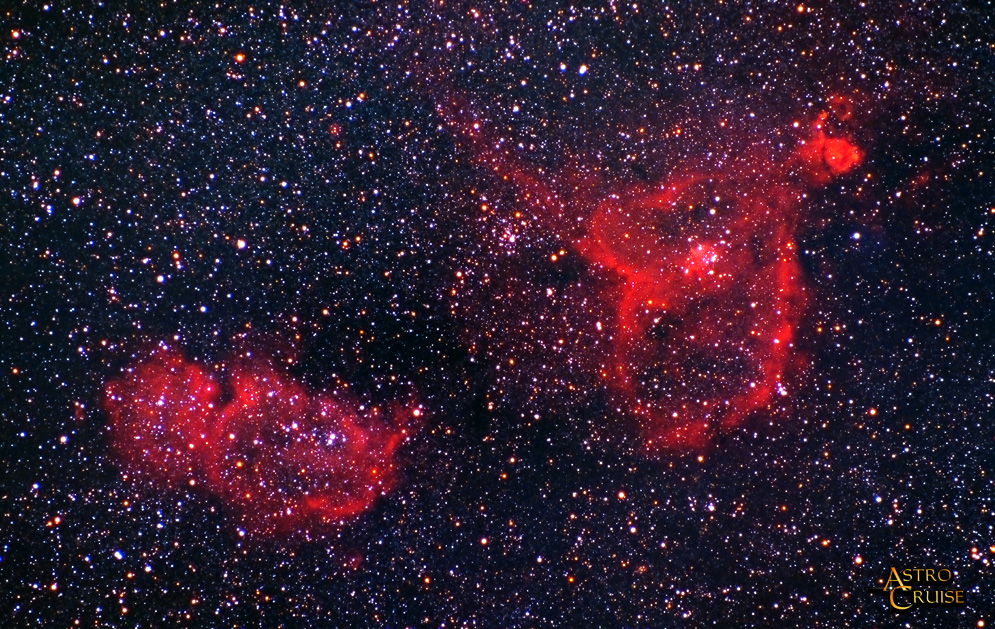
 |
Object Data: Often called the Heart and Soul nebulae, this region is centered on 02h 44m, +61°, in the eastern part of Cassiopeia. IC 1805 (LBN 654 - top right) and IC 1848 (LBN 667 - bottom left) are two regions of hydrogen emission nebulosity. In both cases the IC designations probably refer more accurately to the open star clusters which fuel the hydrogen gas rather than the overall nebulous regions which are known by their respective LBN designations. The Heart and Soul nebulae are not often photographed by amateur photographers, possibly because of their relative faintness compared to the Messier objects, nonetheless they are interesting objects and make an attractive composition.
Date: 20/9/98 and 21/10/98
Location: Wiltshire UK & Southern France
Conditions: 20/9/98: Calm, Transparency=7, Seeing=7. 21/10/98: Calm, Transparency=9, Seeing=6
Telescope / Lens: Nikon 300mm f/2.8 working at f/4 mounted piggyback on Meade LX200 which was used as the mount and guiding system.
Off-Axis Guider: None
Autoguider: SBIG ST-4
Camera: Nikon F2
Film: Hypersensitised Kodak Ektapress Mulitspeed PJM-2
Filtration: 20/9/98: Lumicon Deep Sky Filter. 21/10/98: None
Exposures: 20/9/98: 2x 40 mins. 21/10/98: 4x 20 mins.Enhancement: Six negatives were stacked in register and digitally combined in Picture Window, then further enhanced in Photoshop
Notes: I had originally intended only a double stack for this photograph. I made two initial filtered exposures in the UK, but did not have a chance to scan them (and thus inspect the quality) before departing for France. Therefore while in France I decided to repeat the photograph with 4 unfiltered exposures, made possible by the superior transparency and sky darkness. When I returned to the UK I found that all six exposures were of high quality and decided to stack them all. I was curious as to the result of stacking both filtered and unfiltered images and I think that the result is quite good since blue stars and a faint reflection nebulae can be seen which would otherwise have been obscured by the DS filter. Many thanks to Jerry Lodriguss for his excellent technique: Digitally Removing Uneven Field Illumination which was used on all six images for this multiple stack.
|
|
|
|